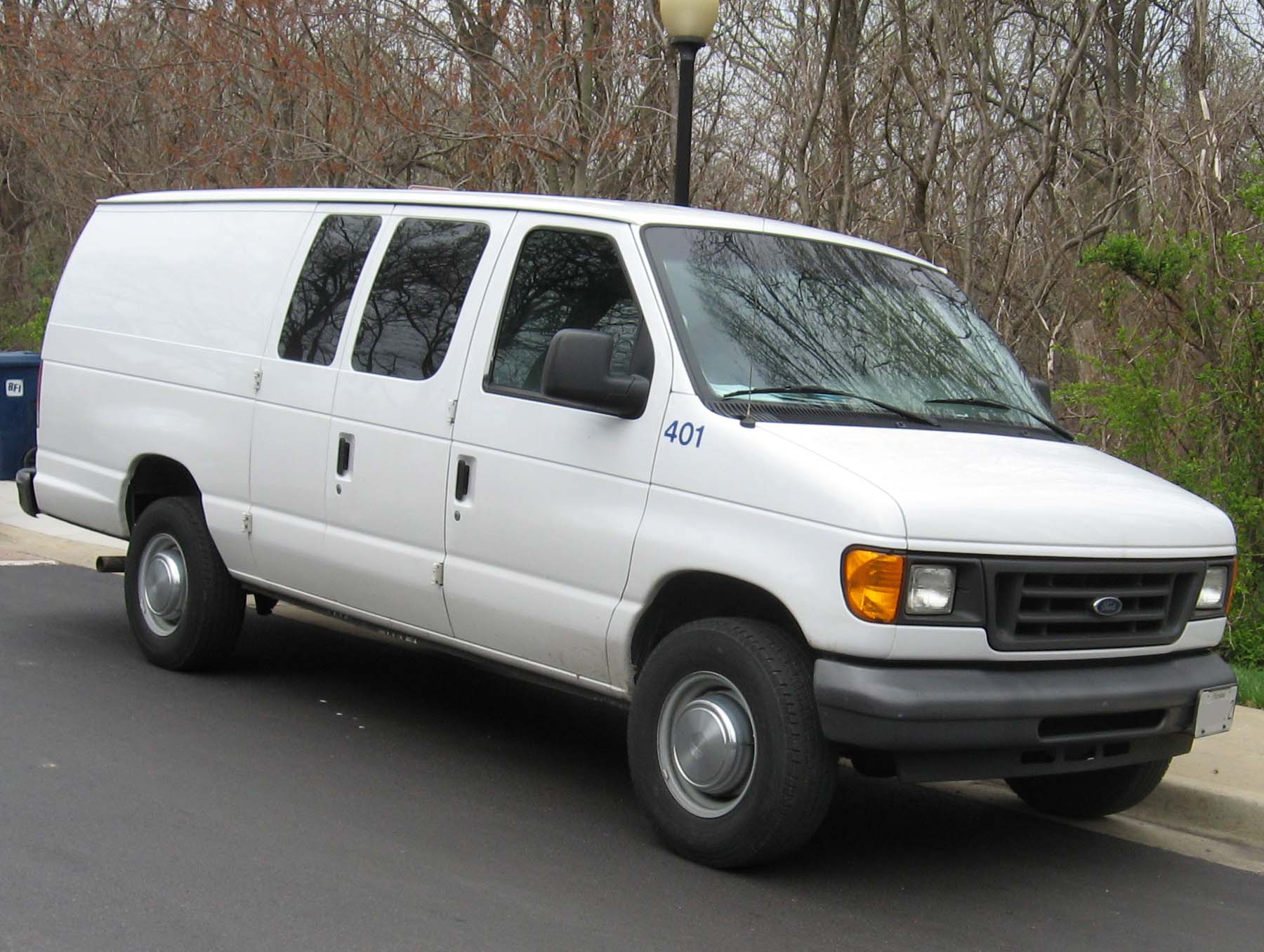
IFCAR, Public domain, via Wikimedia Commons
Your #1 online resource for van dimensions

IFCAR, Public domain, via Wikimedia Commons
The Ford E-Series is one of the most popular cargo vans in the U.S., so Ford produced a lot. There are many models and variants, all with slightly different dimensions, so I thought I'd list them here.
This model, and these measurements, are correct for the Ford E-150, E-250, and E-350, made from 2003 - 2007. The models made from 2003 - 2007 are part of the 4th generation. The dimensions of this section of the fourth generation are a bit different from for example the newer model, so I thought I create a new page to make sure you get the right dimensions.
There are four E-Series Generations in total, and this is one is part of the last one. The Econoline is succeeded by the Ford Transit from 2014-2015 onwards.
In the fourth generation, there have been four new body updates. This one is the second latest one and has been produced from 2003 to 2007.
Being among the most popular cargo vans ever made, it had a huge market share (up to 80% in the U.S.). So there are a lot of them out there, and you can typically get your hands on one for a decent price.
The main difference between the E-150, E-25, and E350, are their towing capacity and general suspension and powertrain. In general, it is safe to say that the E-250 and E-350 are more heavy duty and a bit better-build than the E-150. On the other hand, the E-150 is the most affordable of all three and the most widely available.
For a full overview of the differences, check out my article here.
All models come in just two lengths (regular and extended) and one roof height (!). The E-150 has the lowest roof height. The E-250 / E-350 Regular both have the H2 roof height. The highest roof height is that of the E-250 / E-350 Extended.
| Pros | Cons |
|---|---|
| Compact full-size van | Just two body lengths |
| Widely available (U.S. & Mexico) | Old model (rust) |
| Cheap parts (in the U.S.) | High mileage |
| Affordable | No high top models |
| Lot's of kits and conversion options | Just one wheelbase length |
| Exterior | L1 | L2 | Width |
|---|---|---|---|
| Exterior length (mm) | 5382 | 5890 | 2500 |
| Exterior length (inch) | 211.9 | 231.9 | 98.4 |
exterior width included mirrors is an estimate.
All models of the Ford E-Series have the same interior and exterior width: 72.4" or 1839mm (interior); and 98.4" or 2500mm (exterior).
| Inside dimensions | L1 | L2 | Width |
|---|---|---|---|
| Interior length (mm) | 3061 | 3566 | 1839 |
| Interior length (inch) | 120.5 | 140.4 | 72.4 |
| Max. floor area | L1 | L2 |
|---|---|---|
| Square meters (m2) | 5.6 | 6.6 |
| Square feet (ft2) | 60.6 | 70.6 |
Please note that this is an indication and does not take into account the wheel arches.
The width between the wheel arches on this model is 1341mm, or 52.8".
| Roof in millimeters | H1 | H2 | H3 |
|---|---|---|---|
| Interior height (mm) | 1334 | ||
| Exterior height (mm) | 2050 | 2118 | 2136 |
| Roof in inches | H1 | H2 | H3 |
| Interior height (inch) | 52.5 | ||
| Exterior height (inch) | 80.7 | 83.4 | 84.1 |
| Wheelbase | short (SWB) |
|---|---|
| Wheelbase length (mm) | 3505 |
| Wheelbase length (inch) | 138 |
| Doors | Side door | Rear door |
|---|---|---|
| Door width (mm) | 1006 | 1381 |
| Door height (mm) | 1196 | 1227 |
| Side door | Rear door | |
| Door width (inch) | 39.6 | 54.4 |
| Door height (inch) | 47.1 | 48.3 |
| Variant | Metric (mm) | Inches |
|---|---|---|
| E-150 Regular (L1) | 683 | 26.9" |
| E-250/E-350 Regular (L1) | 732 | 28.8" |
| E-250/E-350 Extended (L2) | 767 | 30.2" |
If you're planning a van racking, I've written articles on ideas for carpenters, van organization, and plumbers. Make sure to check them out here.
If you want to know which van to buy for your van conversion: I've got your back. I've written a really great and detailed article that helps you to narrow it down. I encourage you to check it out here.
Since this model E-Series only comes in a low roof model, I'd say it's not ideal for a camper van, but some people are okay with it. It sure is a nice, compact van, and maintenance is a lot cheaper than for example the European vans (Sprinter - am I right).
You could opt for a conversion van model - these are widely available. However, older conversion vans do have a tendency to rot. I think this is because you don't see the rust behind all that trim, and once you do, it's too late ...
You can't stand in an Econoline, since it only comes in the low top. There are some high top models out there, but these have all been custom-built.
Whether you're thinking of buying this van, or you are already an owner and are planning a conversion or fit-out of your current van, here are some high-quality resources to get you started: